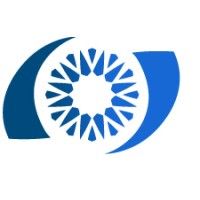预约演示
更新于:2025-05-07
Retinoschisis
视网膜劈裂
更新于:2025-05-07
基本信息
别名 Congenital X Linked Retinoschisis、Congenital X-Linked Retinoschises、Congenital X-Linked Retinoschisis + [56] |
简介 X chromosome recessive disorder, found nearly exclusively in males and becoming apparent around puberty. Characterized initially by a cystlike structure involving the FOVEA CENTRALIS, a peripheral retinoschisis occurs in about half the patients. |
关联
12
项与 视网膜劈裂 相关的药物靶点 |
作用机制 RPGR基因转移 |
在研适应症 |
非在研适应症- |
最高研发阶段临床2期 |
首次获批国家/地区- |
首次获批日期1800-01-20 |
靶点 |
作用机制 XLRS1刺激剂 |
在研适应症 |
非在研适应症- |
最高研发阶段临床1/2期 |
首次获批国家/地区- |
首次获批日期1800-01-20 |
靶点 |
作用机制 XLRS1刺激剂 [+1] |
在研适应症 |
非在研适应症- |
最高研发阶段临床1/2期 |
首次获批国家/地区- |
首次获批日期1800-01-20 |
29
项与 视网膜劈裂 相关的临床试验NCT06375239
Observational, Non-Interventional Study to Determine the Operational Feasibility and Measurement Properties of Endpoints in Patients with Retinal Degeneration
The Vision Research and Assessment Institute (VRAI) was established with the purpose of serving as a testing facility for efficacy endpoints for patients with Low Vision.
The mission of the VRAI is to enable the highest quality, standardized efficacy testing of patients with visual impairment.
The VRAI facilitates the development and refinement of existing endpoints specifically for testing patients with Low Vision.
The mission of the VRAI is to enable the highest quality, standardized efficacy testing of patients with visual impairment.
The VRAI facilitates the development and refinement of existing endpoints specifically for testing patients with Low Vision.
开始日期2024-04-05 |
申办/合作机构 |
NCT06289452
An Open-label, Dose-escalation Clinical Study to Evaluate the Safety, Tolerability, and Preliminary Efficacy of IVB102 Injection in Subjects With X-linked Retinoschisis (XLRS)
The goal of this clinical trial is to evaluate the safety and efficacy of IVB102 injection in subjects with XLRS.
开始日期2024-03-08 |
NCT06345898
Clinical Study on the Safety and Efficacy of JWK002 Injection Administered as a Single Subretinal Injection in Subjects With X-linked Retinoschisis
This trial is to evaluate the safety and efficacy of JWK002 treatment of X-linked retinoschisis(XLRS). This study will enroll subjects aged 5-18 years old to receive a sub-retinal injection of JWK002.
开始日期2023-11-17 |
申办/合作机构 |
100 项与 视网膜劈裂 相关的临床结果
登录后查看更多信息
100 项与 视网膜劈裂 相关的转化医学
登录后查看更多信息
0 项与 视网膜劈裂 相关的专利(医药)
登录后查看更多信息
1,769
项与 视网膜劈裂 相关的文献(医药)2025-07-01·American Journal of Ophthalmology
Colour Doppler and Contrast-Enhanced Ultrasound Characteristics in Degenerative Retinoschisis and Retinal Detachment
Article
作者: Sammouh, Fady ; Macri, Carmelo ; Lee, Yong Min ; Lim, Wanyin ; LE, Matthew ; Paris, Jai ; Gun, Meegan ; Chan, Weng Onn
2025-06-01·American Journal of Ophthalmology
Congenital X-Linked Retinoschisis in an Indian Population: A Single Center Study in 70 Eyes
Article
作者: Venkatapathy, Narendran ; Shah, Parag K ; Das, Abhishek ; Subramaniam, Prema ; Saravanan, Veerappan R
2025-05-01·European Journal of Ophthalmology
Review: Clinical findings and genetic characterization of children affected with X-linked retinoschisis in the Spanish population
Review
作者: Coca Robinot, Javier Francisco ; D’Anna Mardero, Oriana ; Peralta Calvo, Jesús ; Vallespín, Elena ; Arruti Vázquez, Natalia ; Noval Martín, Susana ; Montaño, Victoria EF
64
项与 视网膜劈裂 相关的新闻(医药)2025-05-01
·药事纵横
声明:因水平有限,错误不可避免,或有些信息非最及时,欢迎留言指出。本文仅作医疗健康相关药物介绍,非治疗方案推荐(若涉及);本文不构成任何投资建议。2025 年 4 月至今,国内外CGT领域又涌现出一系列引人注目的融资事件,为行业发展注入新的活力。据不完全统计,共发生10起融资事件。除了我们之前提到的4家公司(诺未生物、觅投克、睿健医药、永生部落干细胞公司)融资事件外,还有6家公司完成融资。(相关文章可点击查看:4家CGT公司完成融资,最高近亿元)1、眼科基因疗法公司Atsena完成 C 轮融资 4 月 2 日,眼科基因疗法开发公司Atsena宣布成功完成 1.5 亿美元超额认购的 C 轮融资。此次融资由贝恩资本(Bain Capita)的生命科学团队牵头,另一位新投资者,惠灵顿管理公司(Wellington Management)也参与其中。该公司现有投资者全部参与了本轮融资。此次融资将主要用于推进 Atsena 的主导项目之一 ATSN-201 的研发,该项目用于治疗 X 连锁视网膜裂(XLRS)。XLRS 是一种遗传性疾病,主要影响男性,通常在儿童时期被诊断,其特征是视网膜层间的异常分裂,随年龄增长视力逐渐丧失,最终致盲。此次融资所得款项还将用于支持 Atsena 的 first-in-class 疗法的临床前管线,以及扩大 Atsena 新型扩散型衣壳 AAV.SPR 的使用。2、中盛溯源B轮融资2.35亿元4月份,中盛溯源生物科技有限公司(以下简称「中盛溯源」)宣布在 B 轮融资中再获数千万元资金支持。至此,中盛溯源 B 轮融资圆满收官,本轮累计融资金额达 2.35 亿元。本次追加融资由广药资本、科金控股、合肥产投、菡源资产知名投资机构联合参与,资金将主要用于加速中盛溯源在 iPSC 衍生细胞治疗领域的多款临床管线开发及后续产品商业化。3、炫景生物完成Pre-A轮融资4月7日,炫景生物宣布完成Pre-A轮融资首关交割,本轮首阶段募集资金由金易赋新等进行投资,此次市场化融资将用于快速推进核心产品RG002C0106临床研究、以及肝外递送技术和药物管线的持续开发。这是该公司继去年完成超亿元人民币的天使+轮融资后,又获得的新融资。炫景生物成立于2022年,专注于小核酸药物的研发和产业化。该公司的首发管线RG002C0106是一款针对补体因子C3靶点开发的siRNA药物,拟用于治疗补体参与介导的原发性或继发性肾小球疾病。该产品已经临床前研究展现出优异的有效性和安全性,目前正在进行临床1期研究、即将启动临床2期研究。4、赛蕴完成数千万元天使+轮4月份,赛蕴生物科技(成都)有限公司(以下简称“赛蕴生物”)宣布完成数千万天使+轮融资。本轮融资由知名硬科技投资机构中科创星独家投资,募集资金将主要用于加速公司自研管线的开发进程。赛蕴生物是一家专注于靶向递送技术及其药物创新疗法研发的企业,成功开发了一类具有自主知识产权的仿生递送系统,有别于主流递送载体体系,该系统经过理性改造,可实现各种类型的有效载荷的精准细胞递送,在特异性识别、载荷兼容性、保护性及生产成本等方面具有显著优势。5、柒色莲生物完成首轮融资4月中旬,柒色莲(上海)生物技术有限责任公司(以下简称“柒色莲生物”)宣布完成由百奥维达(BVCF)独家投资的首轮投资,该轮资金将主要用于加速公司平台建设和产品开发。柒色莲生物专注于个性化细胞治疗与抗衰老,基于新一代诱导多能干细胞(iPSC)技术,开发面向自体细胞治疗、再生医学与健康管理的创新产品与服务。公司通过构建标准化、规模化的高质量细胞资源平台,为多元应用场景提供坚实的技术支持,推动细胞疗法与抗衰老科技的革新进程。6、南京元迈细胞生物获新一轮融资4月中旬,南京元迈细胞生物科技有限公司获得新一轮融资。元迈细胞由南京大学沈萍萍研究团队与资深药企高管共同组建,专注开发纤维化疾病和实体肿瘤治疗技术,致力于解决未满足的临床需求,目前已建立自主知识产权的抗纤维化 Payloads 高通量筛选体系、CAR 功能模块库、体外基因编辑系统和体内基因编辑递送系统四大核心技术平台。元迈细胞通过体内基因编辑递送技术,将巨噬细胞工程化改造技术从体外转染向在体编辑推进,实现从细胞治疗向生物制药的时代跨越,其针对肝纤维化疾病的项目已在开展研究者发起的临床试验(IIT)。2025 年 4 月以来,CGT 领域的这一系列融资事件,从眼科基因疗法突破罕见病治疗瓶颈,到 iPSC 衍生细胞治疗加速商业化进程;从靶向递送技术创新提升药物疗效,到个性化细胞治疗探索抗衰老新方向。随着资金的注入与资源的整合,这些企业将在研发、临床转化和商业化等环节加速推进。参考资料:公开资料
基因疗法siRNA
2025-04-29
DURHAM, N.C., April 29, 2025 (GLOBE NEWSWIRE) -- Atsena Therapeutics, a clinical-stage gene therapy company focused on using the life-changing power of genetic medicine to reverse or prevent blindness, today announced it will present at the following scientific conferences in May: Retinal Therapeutics Innovation Summit 2025 – Salt Lake City, UTSession: Retinal Genetic AugmentationDate and Time: Friday, May 2, 2025, 3:30-3:45 p.m. MTPresentation Title: Advancements in IRD Gene Therapy: From the Bench to the ClinicPresenter: Kenji Fujita, MD, Chief Medical Officer, Atsena Therapeutics ARVO 2025 Symposium – Salt Lake City, UTSession: Innovating Breakthroughs in Ocular Gene TherapyPresentation Date and Time: Thursday, May 8, 2025, 8:51-9:09 a.m. MTPresentation Title: Interim safety and efficacy data in XLRS patients validates the use of a novel, laterally spreading capsid for the treatment of retinal diseasePresenter: Lesley Everett, MD, PhD, Assistant Professor, Ophthalmology, Oregon Health & Science University Poster Session: Retinal Function Testing and Advanced TherapiesPresentation Date and Time: Thursday, May 8, 2025, 2:00-3:45 p.m. MTPosterboard Number: A0499Poster Title: Quantitative Comparison of Two Physical Mobility Tests as Functions of FST and BCVA to Evaluate Therapeutic Benefit in LCA1 Patients Treated with Unilateral Gene TherapyPresenter: Alexandra Viviann Garafalo, Research Project Manager, Perelman School of Medicine, University of Pennsylvania American Society of Gene and Cell Therapy (ASGCT) 28th Annual Meeting – New Orleans and VirtualSession: Gene Therapy Trials - In-Vivo Gene Therapy ModificationDate and Time: Friday, May 16, 2025, 5:15 p.m. ET Presentation Title: Safety and Efficacy of ATSN-201 Dose Escalation in Patients with X-linked Retinoschisis (XLRS)Presenter: Shannon Boye, PhD, Founder and Chief Scientific Officer, Atsena Therapeutics 3rd Annual Retinal Imaging Biomarkers & Endpoints Summit – Boston, MASession: Delving into Commercial Trends, Trial Insights, and Therapeutic Applications to Spearhead DevelopmentDate and Time: Thursday, May 29, 2025, 2:30 p.m. ETPresentation Title: Delving Into Emerging Insights for Trial Endpoints: Analyzing Correlations Between FST & MLMTPresenter: Kenji Fujita, MD, Chief Medical Officer, Atsena Therapeutics About X-linked Retinoschisis (XLRS)XLRS is a monogenic X-linked disease caused by mutations in the RS1 gene which encodes retinoschisin, a protein secreted primarily by photoreceptors. RS1 is localized to the extracellular surface of rods, cones, and bipolar cells. XLRS is characterized by schisis, or abnormal splitting of retinal layers, which causes impaired visual acuity that is not correctable with glasses and leads to progressive vision loss and ultimately blindness. XLRS primarily affects males and is typically diagnosed in early childhood. Approximately 30,000 males in the U.S. and EU have XLRS, for which there are currently no approved treatments. About AAV.SPRAAV.SPR, one of Atsena’s novel capsids, spreads laterally beyond the subretinal injection site to enable safe and efficient transduction of the central retina (where schisis cavities predominate in XLRS patient retinas) when injected into areas outside the macula. A preclinical study in non-human primates demonstrated that AAV.SPR promotes transgene expression well beyond subretinal injection bleb margins. This is in contrast to benchmark AAV vectors, which remain confined to the original bleb margins. At clinically relevant doses, AAV.SPR efficiently transduces foveal cones without the need for surgical detachment and has a favorable safety profile relative to benchmark capsids. For more information about the preclinical study and how AAV.SPR works, visit https://atsenatx.com/our-approach/laterally-spreading-aav/. About Atsena TherapeuticsAtsena Therapeutics (“Atsena”) is a clinical-stage gene therapy company developing best-in-class treatments for the reversal or prevention of blindness from inherited retinal diseases. The company’s lead program is evaluating ATSN-201 in an ongoing Phase I/II clinical trial for X-linked retinoschisis (XLRS), a genetic condition that is typically diagnosed in childhood and leads to blindness later in life. ATSN-101, Atsena’s first-in-class, investigational gene therapy for Leber congenital amaurosis type 1 (LCA1) has completed a Phase 1 / 2 trial with positive results (https://doi.org/10.1016/s0140-6736(24)01447-8). Atsena is advancing ATSN-101 toward the initiation of a global pivotal trial as part of its exclusive strategic collaboration with Nippon Shinyaku Co., Ltd. Atsena’s pipeline is powered by novel adeno-associated virus (AAV) technology tailored to overcome the hurdles presented by inherited retinal diseases. Founded by pioneers in ocular gene therapy, Atsena is led by an experienced team dedicated to addressing the needs of patients with vision loss. For more information, please visit https://atsenatx.com/. Media Contact:Gina Mangiaracina6 Degrees(917) 797-7904gmangiaracina@6degreespr.com Business Contact:info@atsenatx.com
基因疗法临床研究
2025-04-17
April 15, 2025 -- Atsena Therapeutics, a clinical-stage gene therapy company focused on using the life-changing power of genetic medicine to reverse or prevent blindness, today announced that the U.S. Food and Drug Administration (FDA) has granted Regenerative Medicine Advanced Therapy (RMAT) designation for ATSN-201 for the treatment of X-linked retinoschisis (XLRS). ATSN-201, a best-in-class gene therapy product candidate, leverages AAV.SPR, the company’s novel spreading capsid, to achieve therapeutic levels of gene expression in photoreceptors of the central retina while avoiding the surgical risks of foveal detachment.
“We’re honored that the FDA has granted Regenerative Medicine Advanced Therapy (RMAT) designation to ATSN-201, further underscoring its potential to address the urgent, unmet need in XLRS—a rare inherited retinal disease with no approved treatments,” said Patrick Ritschel, Chief Executive Officer of Atsena Therapeutics. “This regulatory momentum, coupled with the recent close of our oversubscribed $150 million Series C financing, reinforces our commitment to advancing meaningful gene therapies that have the potential to improve vision and quality of life for individuals living with XLRS and other inherited retinal diseases.”
Established under the 21st Century Cures Act, RMAT designation is a dedicated program designed to expedite the drug development and review processes for promising pipeline products, including gene therapies. A regenerative medicine therapy is eligible for RMAT designation if it is intended to treat, modify, reverse, or cure a serious or life-threatening disease or condition, and preliminary clinical evidence indicates that the drug or therapy has the potential to address unmet medical needs for that disease or condition. RMAT designation provides sponsors with intensive FDA guidance on efficient drug development, including the ability to discuss surrogate or intermediate endpoints, potential ways to support accelerated approval and satisfy post-approval requirements, potential priority review of the biologics license application (BLA), and other opportunities to expedite development and review.
Currently, there are no approved treatments for XLRS, which is typically diagnosed in early childhood and affects approximately 30,000 males in the U.S. and the EU. The safety and tolerability of ATSN-201 is currently being evaluated in the LIGHTHOUSE study, a Phase I/II, dose-escalation and dose-expansion clinical trial in male patients ages six and older with a clinical diagnosis of XLRS caused by mutations in the RS1 gene. Enrollment for this study is ongoing.
XLRS is a monogenic X-linked disease caused by mutations in the RS1 gene which encodes retinoschisin, a protein secreted primarily by photoreceptors. RS1 is localized to the extracellular surface of rods, cones, and bipolar cells. XLRS is characterized by schisis, or abnormal splitting of retinal layers, which causes impaired visual acuity that is not correctable with glasses and leads to progressive vision loss and ultimately blindness. XLRS primarily affects males and is typically diagnosed in early childhood. Approximately 30,000 males in the U.S. and EU have XLRS, for which there are currently no approved treatments.
AAV.SPR, one of Atsena’s novel capsids, spreads laterally beyond the subretinal injection site to enable safe and efficient transduction of the central retina (where schisis cavities predominate in XLRS patient retinas) when injected into areas outside the macula. A preclinical study in non-human primates demonstrated that AAV.SPR promotes transgene expression well beyond subretinal injection bleb margins. This is in contrast to benchmark AAV vectors, which remain confined to the original bleb margins. At clinically relevant doses, AAV.SPR efficiently transduces foveal cones without the need for surgical detachment and has a favorable safety profile relative to benchmark capsids.
Atsena Therapeutics (“Atsena”) is a clinical-stage gene therapy company developing best-in-class treatments for the reversal or prevention of blindness from inherited retinal diseases. The company’s lead program is evaluating ATSN-201 in an ongoing Phase I/II clinical trial for X-linked retinoschisis (XLRS), a genetic condition that is typically diagnosed in childhood and leads to blindness later in life. ATSN-101, Atsena’s first-in-class, investigational gene therapy for Leber congenital amaurosis type 1 (LCA1) has completed a Phase 1 / 2 trial with positive results (https://doi.org/10.1016/s0140-6736(24)01447-8). Atsena is advancing ATSN-101 toward the initiation of a global pivotal trial as part of its exclusive strategic collaboration with Nippon Shinyaku Co., Ltd. Atsena’s pipeline is powered by novel adeno-associated virus (AAV) technology tailored to overcome the hurdles presented by inherited retinal diseases. Founded by pioneers in ocular gene therapy, Atsena is led by an experienced team dedicated to addressing the needs of patients with vision loss.
The content above comes from the network. if any infringement, please contact us to modify.

临床研究孤儿药基因疗法快速通道
分析
对领域进行一次全面的分析。
登录
或

生物医药百科问答
全新生物医药AI Agent 覆盖科研全链路,让突破性发现快人一步
立即开始免费试用!
智慧芽新药情报库是智慧芽专为生命科学人士构建的基于AI的创新药情报平台,助您全方位提升您的研发与决策效率。
立即开始数据试用!
智慧芽新药库数据也通过智慧芽数据服务平台,以API或者数据包形式对外开放,助您更加充分利用智慧芽新药情报信息。
生物序列数据库
生物药研发创新
免费使用
化学结构数据库
小分子化药研发创新
免费使用




